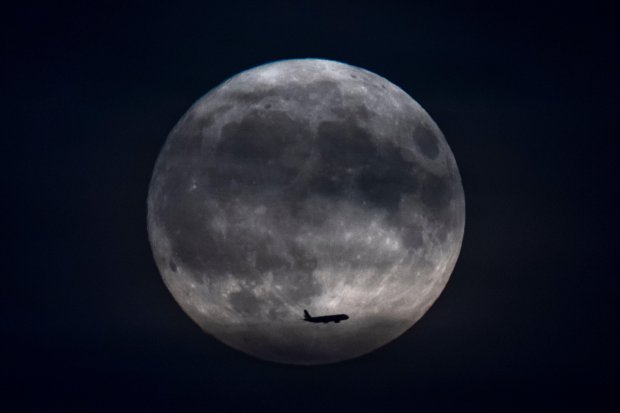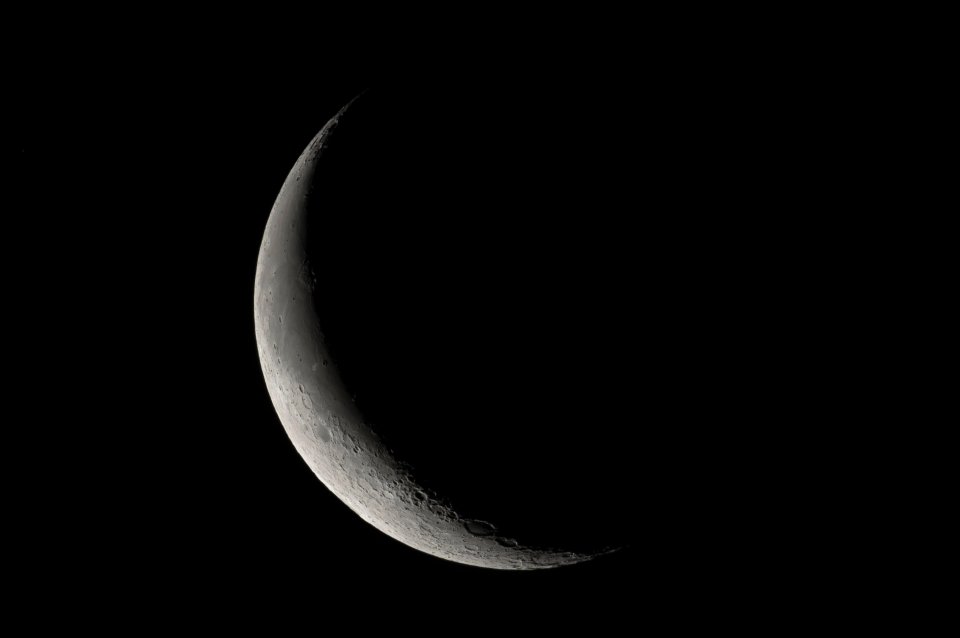A RARE “black moon” linked to the biblical prophecy of the “End of Time” is expected to show up in the night sky over the weekend.
The astronomical spectacle, also known as the Ominous “evil twin” of a new moon, occurs once every three years.
The calendar quirk occurs when a second new moon rises within a single calendar month.
Unlike a full moon, a new moon passes between Earth and the sun, meaning the side facing our planet remains in shadow and is invisible to the naked eye.
This means stargazers and astronomy fanatics will not be able to see the spectacle.
However, a pitch-dark sky would be the perfect time for enjoying the summer stars – and even the Milky Way galaxy.
While the celestial event is a natural phenomenon, it has been widely linked to biblical passages such as Mark 13:24, according to the Daily Mail.
It says: “The sun will be darkened, and the moon will not give its light.”
According to the prophecy, such events occur during the “end of time”, a period of significant events leading up to the return of Jesus Christ and the establishment of God’s eternal kingdom.
However, scientists and astronomers were quick to debunk superstitious claims.
Walter Freeman, associate teaching professor of physics at Syracuse University, said: “A black moon is just a second new moon that happens in one calendar month.
“If a new moon occurs near the beginning of the month, the next one can happen before it’s over.
“From a scientific perspective, this is no different than any other new moon.”
It comes after a stunning new Nasa clip captured the moment a rare black hole gobbled up a star and caused an earth-shattering explosion.
The clip shows the rare moment that the suspected intermediate-mass black hole (IMBH) HLX-1 ripped apart the star, triggering the almighty explosion.
Black holes come in a range of sizes, but can be up to 40 billion times bigger than the Sun, Live Science reports.
According to Live Science, IMBHs are hard to spot and often confused with clusters of smaller black holes left over from collapsed stars.
Researchers also think they may hide behind small groups of stars that closely orbit them without being ripped apart.
Meanwhile, a mysterious interstellar object blazing through our solar system could be a piece of “possibly hostile” alien technology, according to a controversial new study.
The Moon – our closest neighbour explained

- The Moon is a natural satellite – a space-faring body that orbits a planet
- It’s Earth’s only natural satellite, and is the fifth biggest in the Solar System
- The Moon measures 2,158 miles across, roughly 0.27 times the diameter of Earth
- Temperatures on the Moon range from minus 173 degrees Celcius to 260 degrees Celcius
- Experts assumed the Moon was another planet, until Nicolaus Copernicus outlined his theory about our Solar System in 1543
- It was eventually assigned to a “class” after Galileo discovered four moons orbiting Jupiter in 1610
- The Moon is believed to have formed around 4.51billion years ago
- The strength of its gravitational field is about a sixth of Earth’s gravity
- Earth and the Moon have “synchronous rotation”, which means we always see the same side of the Moon – hence the phrase “dark side of the Moon”
- The Moon’s surface is actually dark, but appears bright in the sky due to its reflective ground
- During a solar eclipse, the Moon covers the Sun almost completely. Both objects appear a similar size in the sky because the Sun is both 400 times larger and farther
- The first spacecraft to reach the Moon was in 1959, as part of the Soviet Union’s Lunar program
- The first manned orbital mission was Nasa’s Apollo 8 in 1968
- And the first manned lunar landing was in 1969, as part of the Apollo 11 mission
The research, from a small group of scientists including a renowned alien-hunting Harvard University astronomer, argues that object 3I/ATLAS is actually an extraterrestrial probe in disguise.
On 1 July, astronomers spotted a highly unusual object zooming towards our Sun at roughly 245,000 kilometres per hour – or 68km a second.
With a “short tail” and a “fuzziness” around it, astronomers declared it an icy comet – and the fastest rock our solar system has ever seen.
Judging by its bizarre orbit, experts determined that the super-fast space traveller had come from outside our solar system.
That would make it the third interstellar object to pass Earth on record, following the rare visits of the famous 1I/ʻOumuamua asteroid in 2017 and 2I/Borisov in 2019.
But Harvard astrophysics professor Avi Loeb and his colleagues suggest it could be something more advanced than an interstellar rock.















